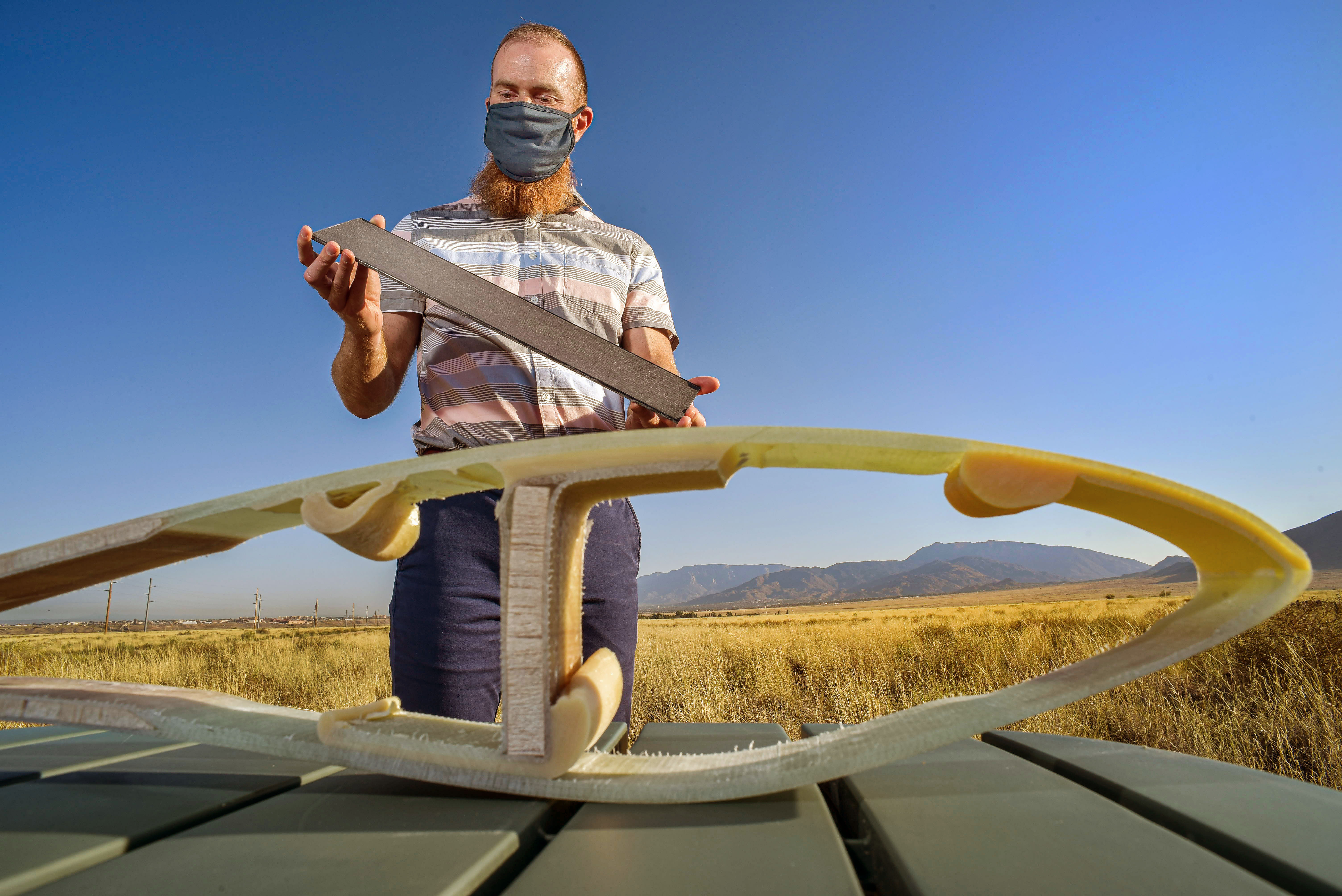
Sandia National Laboratories has released a new study which suggests that a new carbon fiber material could bring cost and performance benefits to the wind industry if developed commercially.
According to the company, wind blades containing carbon fiber weigh 25% less than ones made from traditional glass fiber materials. That means carbon fiber blades could be longer than glass fiber ones and capture more energy in locations with low wind. A switch to carbon fiber could also extend blade lifetime because carbon fiber materials have a high fatigue resistance, according to Brandon Ennis, a wind energy researcher at Sandia Labs and the principal investigator for the project.
However, costs are an issue in using carbon fiber, and turbine manufacturers have to build blades able to withstand compressive and fatigue loads for up to 30 years.
According to Ennis, a new lower-cost carbon fiber developed at Oak Ridge National Laboratory (ORNL) could meet the performance needs of the wind industry and also bring cost benefits. This material starts with a widely available precursor from the textile industry containing thick bundles of acrylic fibers. The manufacturing process, which heats the fibers to convert them to carbon, is followed by an intermediate step that pulls the carbon fiber into planks. The plank-making pultrusion process creates carbon fiber with high performance and reliability needed for blade manufacturing and also allows for high production capacity, according to Sandia. The research team suggest that the material performed better than current commercial materials ‘in terms of cost-specific properties of most interest to the wind industry’.
In tests, the mechanical properties of the carbon fiber were compared to commercially available carbon fiber and standard glass fiber composites. Ennis then combined these measurements with cost modeling results from ORNL and used the data in a blade design analysis to assess the system impact of using the novel carbon fiber, instead of standard carbon fiber or glass fiber, as the main structural support in a wind blade.
Ennis and his colleagues found that the new carbon fiber material had 56% more compressive strength per dollar than commercially available carbon fiber, Typically, manufacturers accommodate a lower compressive strength by using more material to make a component, which then increases costs. Considering the higher compressive strength per cost of the novel carbon fiber, Ennis’ calculations predicted about a 40% savings in material costs for a spar cap, which is the main structural component of a wind turbine blade, made from the new carbon fiber compared to commercial carbon fiber.
The novel carbon fiber also reduced predicted materials costs when compared to glass fiber for a land-based turbine design, due to the improved fatigue resistance. Other results from using the novel carbon fiber in blade design, such as decreased weight and increased fatigue lifetime, could influence the entire turbine design in ways that bring additional cost and performance benefits too, Ennis said.
‘While the optimal carbon fiber for the wind industry does not exist on the market yet, this new textile carbon fiber has performance characteristics that have higher value for the specific loads that a wind turbine experiences,’ he said. ‘Developing this material commercially could enable the benefits of carbon fiber materials to be realized more broadly by the wind industry and lower the overall cost of wind energy.’
The study can be found here.
This story uses material from Sandia, with editorial changes made by Materials Today. The views expressed in this article do not necessarily represent those of Elsevier.




